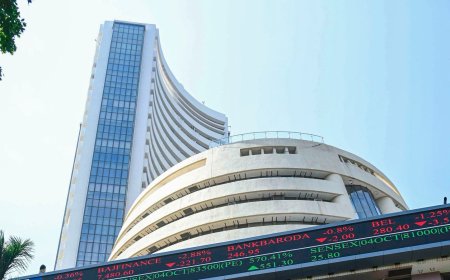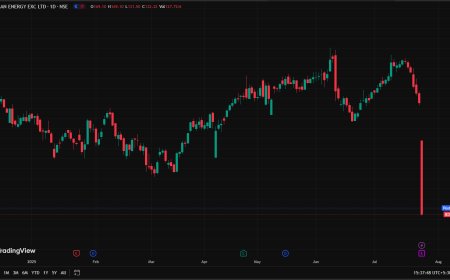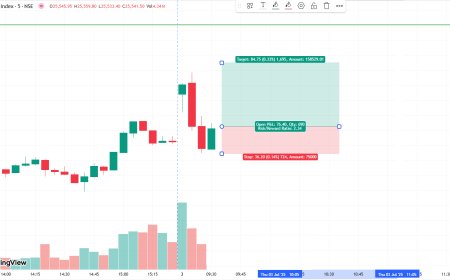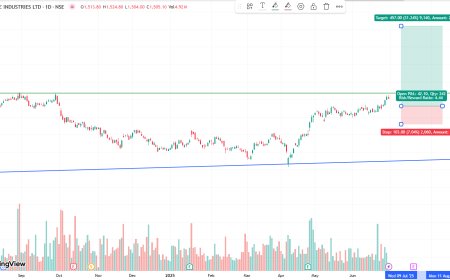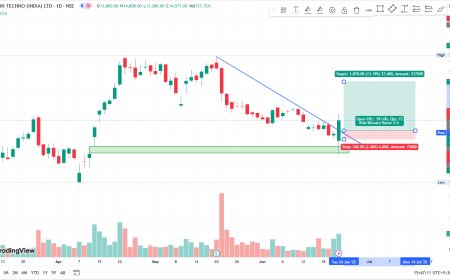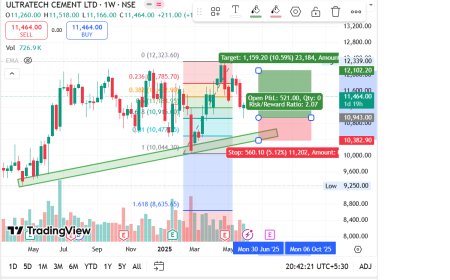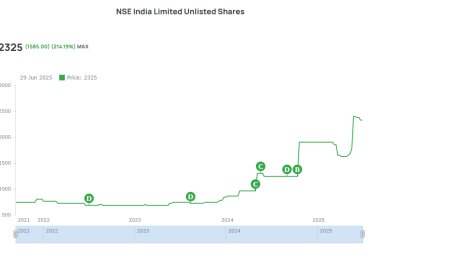FMCG Stocks Face Margin Pressure in 2025: Here’s What’s Dragging the Sector
Rising input costs, rural slowdown, and pricing challenges are squeezing FMCG margins. Explore why top FMCG stocks are under pressure despite stable demand and what lies ahead.

FMCG Stocks Face Margin Pressure. Here’s Why.
The Fast-Moving Consumer Goods (FMCG) sector in India has long been considered a safe haven for investors—known for its consistent growth, resilient demand, and dependable dividends. But the story in 2025 has taken a twist. FMCG stocks are increasingly coming under pressure, not because people have stopped buying soap or biscuits, but due to intensifying margin compression.
Despite steady top-line numbers, several large and mid-sized FMCG companies are struggling to protect their profitability. Investors, too, are taking note, with stock prices of FMCG heavyweights showing muted performance in recent quarters. So, what’s driving this margin squeeze in one of India’s most dependable sectors?
Let’s break it down.
A Sector Feeling the Heat: Margin Pressure in Focus
In Q4 FY24 and the early part of FY25, major FMCG players reported lackluster operating margins—even when revenues saw modest growth. This anomaly has set alarm bells ringing across Dalal Street.
Here’s a quick snapshot:
| Company | Q4 FY24 Revenue Growth | Q4 FY24 Operating Margin | YoY Margin Change |
|---|---|---|---|
| Hindustan Unilever | 4.5% | 22.3% | -120 bps |
| Dabur India | 5.2% | 19.1% | -150 bps |
| Marico | 3.8% | 16.8% | -130 bps |
| Nestle India | 6.1% | 21.7% | -80 bps |
Margins have clearly been squeezed. The question is—why?
1. Raw Material Inflation: The Core Margin Killer
One of the biggest culprits behind shrinking margins is a familiar foe—input cost inflation.
In recent quarters, prices of essential commodities used in FMCG manufacturing have surged due to global supply disruptions, adverse weather, and currency volatility.
Key Input Costs on the Rise:
-
Palm oil: Used in soaps, snacks, and processed foods, up ~12% YoY.
-
Milk and dairy: Core to companies like Nestlé and Britannia, up ~8–10%.
-
Wheat and sugar: Increased due to erratic monsoons and export curbs.
-
Crude-linked packaging materials: Up nearly 15% YoY due to higher oil prices.
“We are unable to fully pass on inflation to consumers without risking volume erosion,” noted a senior executive at a leading FMCG firm.
This dilemma—of absorbing costs to protect volumes—has turned the margin management game into a delicate balancing act.
2. Rural Demand Recovery Still Uneven
For years, rural India has been the growth engine for FMCG companies. But that engine is currently sputtering.
While urban demand remains relatively stable thanks to premiumization and e-commerce adoption, rural markets are still grappling with income stress, especially after weak rainfall in several key agrarian belts last year.
Rural vs Urban Sales Trends (Q4 FY24):
| Company | Urban Volume Growth | Rural Volume Growth |
|---|---|---|
| HUL | +6% | +1% |
| Dabur | +5% | Flat |
| Emami | +4.5% | -1.5% |
Rural demand’s sluggish recovery has hit low-value SKUs hard. Since these SKUs contribute significantly to volume growth and operating leverage, their underperformance is directly feeding into margin pressure.
3. Limited Pricing Power in a Price-Sensitive Market
India remains a price-conscious market. This becomes a problem when companies try to pass on increased costs through price hikes. There’s a ceiling to how much they can stretch consumer wallets.
The result? Companies have adopted tactics like grammage reduction, promotional bundling, or delayed price hikes—none of which are ideal for margin expansion.
“Promotions are eating into our gross margins. We’re being forced to discount just to retain shelf space,” said a mid-cap FMCG CFO.
4. Inventory & Distribution Costs Also on the Rise
With rising fuel prices, logistics and warehousing costs are up by nearly 7–9% YoY. The increase in last-mile delivery costs and warehousing rentals is hurting companies, especially those with deep distribution networks.
Moreover, inventory pile-up in rural areas has forced companies to offer higher channel incentives, further adding to their cost burden.
5. Ad-Spend is Back—But at a Cost
As competition intensifies—especially from regional and D2C brands—established FMCG firms are ramping up their advertising and promotional (A&P) expenses. The advertising war, particularly on digital and OTT platforms, is back with a vengeance.
Top firms have reported a 10–15% spike in ad-spend YoY, diverting funds away from core margin accretive activities.
Stock Performance Reflects the Stress
While FMCG stocks typically serve as defensive plays in volatile markets, they’ve underperformed broader indices in recent months.
FMCG Index vs Nifty 50 (YTD 2025)
| Index | YTD Return |
|---|---|
| Nifty 50 | +8.2% |
| Nifty FMCG | +2.1% |
This underperformance highlights investor concerns about earnings quality and margin sustainability, despite top-line stability.
How Are Companies Responding?
To navigate this pressure cooker scenario, many FMCG players are tweaking their strategies:
-
Premiumization: Pushing higher-margin SKUs in urban markets.
-
Direct-to-consumer (D2C): Building digital sales channels to bypass distributors.
-
Localization: Sourcing raw materials locally to reduce import dependencies.
-
Innovation: Launching affordable but differentiated products to drive volumes.
Some firms are also reworking supply chain contracts and renegotiating logistics deals to cut fixed costs.
Investor Perspective: Should You Stay Invested in FMCG?
While short-term challenges persist, the long-term story remains intact. The FMCG sector thrives on demographics, consumption growth, and brand loyalty—none of which are going away.
Reasons to Hold FMCG Stocks:
-
Resilient demand even in economic slowdowns.
-
Strong free cash flow and dividend payouts.
-
Secular growth drivers: rising incomes, urbanization, health awareness.
Risks to Watch:
-
Prolonged inflation in raw materials.
-
Regulatory price controls or taxation.
-
Slower-than-expected rural revival.
For investors, this could be an opportune time to accumulate high-quality FMCG names at relatively fair valuations—provided they have a long-term lens.
The Road Ahead: Will Margins Bounce Back in H2 2025?
Analysts expect some margin recovery in the second half of FY25, contingent on the following:
-
Normal monsoon to boost rural consumption.
-
Softening in global commodity prices, particularly palm oil and crude.
-
Stabilization in global trade, which may ease packaging and freight costs.
However, the pace of recovery may differ across companies based on their product mix, pricing agility, and distribution efficiency.
Margin Squeeze Is Real—But Not Permanent
FMCG stocks are facing a classic cost conundrum—strong demand but rising expenses. In the short term, margin pressure may persist, but with strategic tweaks and a favorable macro tailwind, the sector could regain its footing.
For investors, this period calls for patience and selectivity. Focus on companies with strong balance sheets, pricing power, and innovation-led growth. After all, in a consumption-driven economy like India, FMCG is unlikely to remain under pressure for long.
What's Your Reaction?
 Like
0
Like
0
 Dislike
0
Dislike
0
 Love
0
Love
0
 Funny
0
Funny
0
 Angry
0
Angry
0
 Sad
0
Sad
0
 Wow
0
Wow
0




